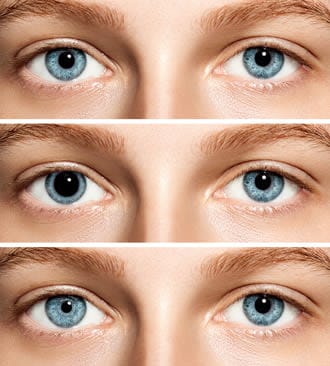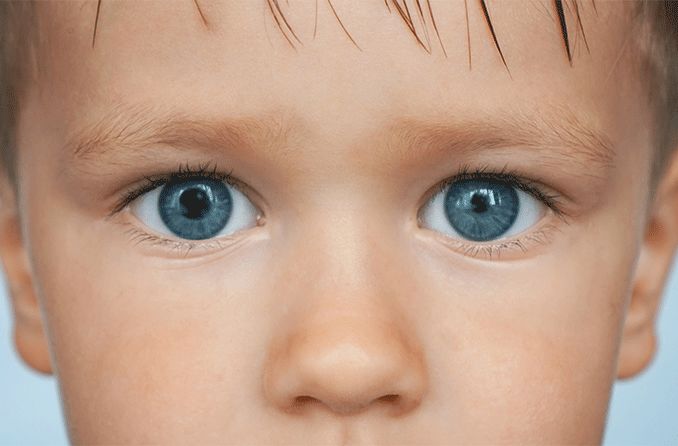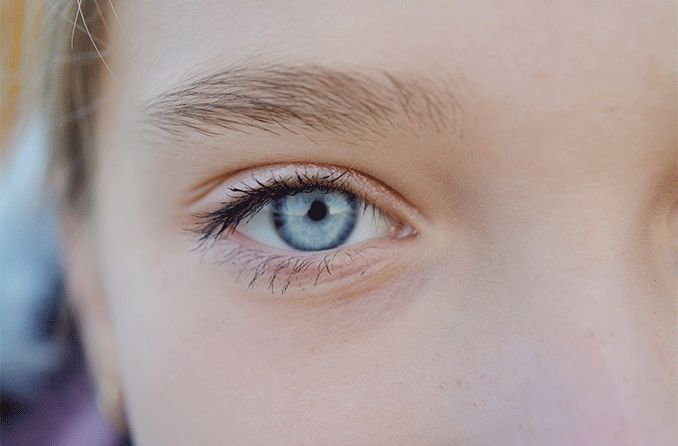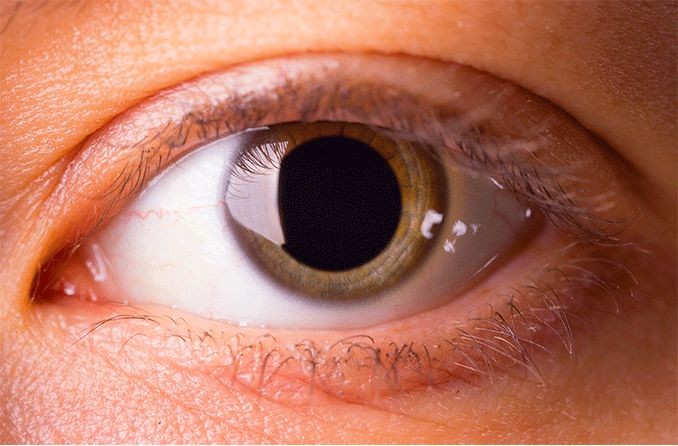What is anisocoria?
Anisocoria is different pupil sizes in each eye. One pupil may be bigger than normal, or one pupil may be smaller than normal, resulting in unequal pupils. In most cases, anisocoria is mild, constant and no cause for concern. But if it occurs suddenly, this can be a sign of a serious medical condition and you should see an eye doctor immediately.
Anisocoria is pronounced “an-eye-so-CORE-ee-ah.”
Anisocoria types and causes
There are four main types of anisocoria:
Simple anisocoria
Pathologic anisocoria
Mechanical anisocoria
Pharmacologic anisocoria
Simple anisocoria
Simple anisocoria — also called essential anisocoria or physiologic anisocoria — is the most common type of anisocoria. It’s a benign (harmless) condition that affects approximately 20% of the population.
In simple anisocoria, the difference in pupil size is usually 1 millimeter (mm) or less, and both pupils react normally to light. The presence of simple anisocoria does not appear to be influenced by sex, age or eye color.
The exact cause of simple anisocoria is unknown. It may be intermittent or constant, and sometimes it goes away on its own.

Top: Normal pupils. Middle: Anisocoria with one pupil bigger than normal. Bottom: Anisocoria with one pupil smaller than normal.
SEE RELATED: Small pupils: What do they mean?
Pathologic anisocoria
Pathologic anisocoria is different pupil sizes due to an underlying condition or disease. Examples of conditions that cause anisocoria include:
Iritis
Iritis is a form of uveitis (an inflammatory disease of the eye). Acute iritis is characterized by:
Eye redness
Eye pain
Inflammation of the iris
A smaller pupil in the affected eye (anisocoria)
Iritis has many causes, including eye infection, underlying inflammatory diseases and trauma. Your eye doctor can treat the symptoms of iritis while the underlying cause of the condition is determined and controlled.
In some cases, anisocoria from iritis can remain after the iritis has been successfully treated.
Horner’s syndrome
Most people with Horner’s syndrome have these three signs:
Ptosis (drooping eyelid)
Miosis (constriction of one pupil), causing anisocoria
Facial anhidrosis (loss of sweating around the affected eye)
Horner’s syndrome also affects how quickly the smaller pupil dilates in dim lighting. Normal pupils (including normal pupils that are slightly unequal in size) dilate within five seconds of room lights being dimmed. A pupil affected by Horner’s syndrome generally takes 10 to 20 seconds to dilate in dim lighting or a darkened room.
Horner’s syndrome typically is caused by an underlying medical problem, such as a stroke, tumor or spinal cord injury. But in some cases, no cause can be found.
Adie’s tonic pupil
Adie’s tonic pupil is a dilated pupil caused by damage to nerve fibers that control muscles in the eye that constrict the pupil. The affected pupil also reacts poorly to light. Adie’s tonic pupil occurs primarily in women between the ages of 20 to 40 years. In 80% of cases, only one eye is affected, resulting in anisocoria. In most cases, the cause of Adie’s tonic pupil is unknown.
Third nerve palsy
The third cranial nerve — also called the oculomotor nerve — controls several muscles that move the eyes and eyelids. It also influences a muscle that controls pupil size. Paralysis (palsy) of the oculomotor nerve causes the affected eye to have a dilated pupil, resulting in anisocoria.
In addition to anisocoria, third nerve palsy also can cause:
Ptosis (drooping eyelid)
A “down and out” misalignment of the affected eye (strabismus)
Loss of accommodation (ability to focus on near objects)
Causes of third nerve palsy include:
Pressure on the oculomotor nerve from an aneurysm, tumor or brain hemorrhage
Migraine
Severe infections, such as meningitis
If you or a family member develop symptoms of third nerve palsy, seek medical attention immediately.
Mechanical anisocoria
Mechanical anisocoria is unequal pupil sizes from damage to the iris or its supporting structures. Causes of this type of anisocoria include:
Trauma to the eye
Complications of eye surgery (including cataract surgery)
Inflammatory conditions such as iritis or uveitis
Congenital anomalies of the iris also can be a cause of mechanical anisocoria. Examples include:
Aniridia (a complete or partial absence of the iris of one eye)
Coloboma (a gap in the iris present at birth, giving the pupil a distinct “keyhole” or “cat-eye” appearance)
Ectopic pupil (an inherited condition that causes displacement of the pupil and dislocation of the lens)
Tumors inside the eye also can cause mechanical anisocoria.
Pharmacologic anisocoria
Pharmacologic anisocoria is unequal pupil size that occurs as a side effect of a medication.
Drugs that have been identified as potential causes of pharmacologic anisocoria include:
Selective serotonin re-uptake inhibitors (SSRIs) used to treat depression
Transdermal scopolamine patches used to treat motion sickness and nausea from chemotherapy
Certain glaucoma eye drop medications also can cause anisocoria, especially if they are used to treat glaucoma in just one eye. Examples of glaucoma medications that can cause anisocoria include:
Apraclonidine (larger pupil in the treated eye)
Brimonidine (larger pupil in the treated eye)
Pilocarpine (smaller pupil in the treated eye)
What to do if you have anisocoria
If you or someone else notices that you have unequal pupil sizes, see your eye doctor immediately — especially if you have any of the following:
Drooping eyelid (ptosis)
Loss of vision
Headache or neck pain
Recent head or eye injury
If the anisocoria is minor and your pupils react normally to tests your eye doctor performs, there may be nothing to worry about. But you should have your unequal pupils evaluated by an eye care professional or neurologist before you assume all is well.
If you have anisocoria and one pupil is bigger than the other, ask your eye doctor about photochromic lenses. These eyeglass lenses will darken automatically in sunlight to reduce any light sensitivity (photophobia) you may be experiencing.
Photochromic lenses also will protect your eyes from harmful UV rays and filter high-energy blue light — this is beneficial for the eye with the larger pupil if it doesn't react normally to light.
READ NEXT: What is a blown pupil?









